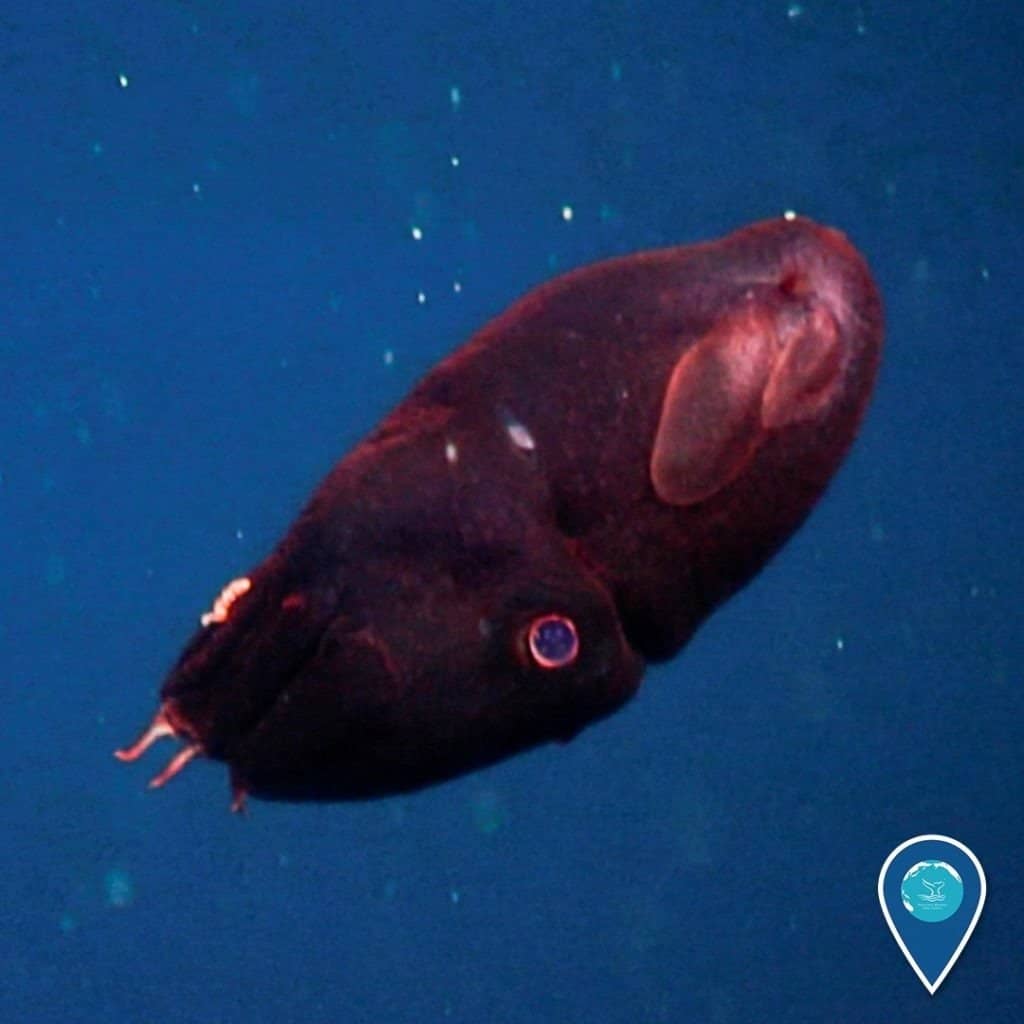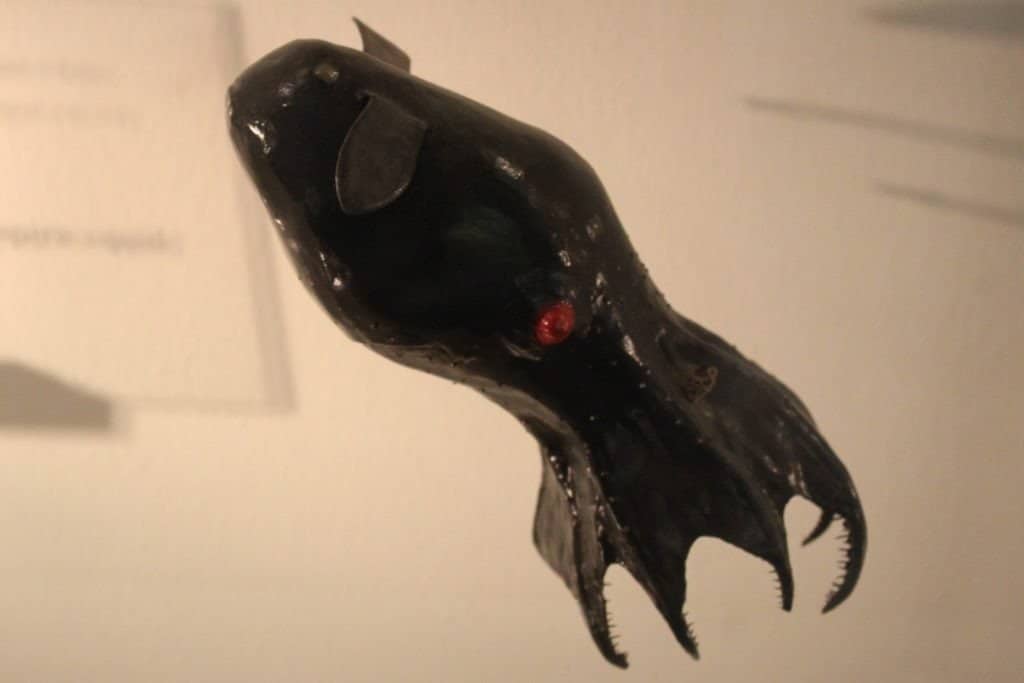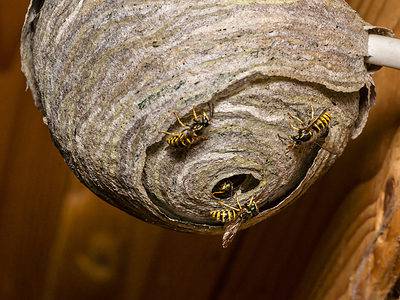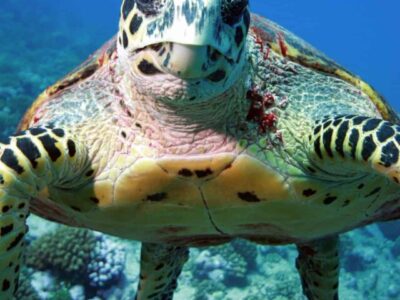Each of its eight arms has spines, though they use two filaments to eat.
Advertisement
Vampire Squid Scientific Classification
- Kingdom
- Animalia
- Phylum
- Mollusca
- Class
- Cephalopoda
- Order
- Vampyromorphida
- Family
- Vampyroteuthidae
- Genus
- Vampyroteuthis
- Scientific Name
- Vampyroteuthis infernalis
Read our Complete Guide to Classification of Animals.
Vampire Squid Conservation Status

Vampire Squid Facts
- Prey
- Marine snow, dead planktonic creatures
- Group Behavior
- Solitary
- Fun Fact
- Each of its eight arms has spines, though they use two filaments to eat.
- Estimated Population Size
- Not known
- Biggest Threat
- Whales, large fishes, and sea lions
- Most Distinctive Feature
- Red or blue eyes
- Gestation Period
- 13 months
- Habitat
- Tropical and temperate deep waters around the globe
- Predators
- Whales, large fishes, and sea lions
- Diet
- Omnivore
- Favorite Food
- Marine snow and detritus that contains dead planktonic creatures and fecal pellets
- Type
- Sea creature
- Common Name
- Vampire squid
- Number Of Species
- 1
View all of the Vampire Squid images!

The vampire squid is a small cephalopod and is found in tropical as well as temperate oceans.
They usually exist in the deep seas and use bioluminescent organs and oxygen metabolism to survive parts of the sea that have extremely low levels of oxygen.
This sea creature resembles both squid and an octopus. However, it is none of the two. It has eight arms and two tentacles. The vampire squid’s name comes from its dark color and also the skin that connects its multiple arms – forming a cape-like structure.
Vampire squids have two filaments. However, these sea creatures are only able to extend one filament that helps these fishes overcome energy deficiencies in areas where the concentration of oxygen is low.
Incredible Vampire Squid Facts!

A young Vampire squid (Vampyroteuthis infernalis) surprised the research crew as we started to ascend from Sur Ridge in December 2013. Like many deep-sea cephalopds, vampire squid lack ink sacks. Instead of ink for defense, a sticky cloud of bioluminescent mucus is expelled from the arm tips.
©National Marine Sanctuaries, Public domain, via Wikimedia Commons – License
- Arms with spines: Each of the vampire squid’s eight arms has spines that are arranged in two rows.
- Largest eyes in the animal kingdom: These sea creatures have the largest eyes in the animal kingdom in comparison to the size of the body.
- Multi-colored eyes: The eyes of the creature look either red or blue – depending upon the light that they are in at that particular moment.
- A unique way to move forward: These creatures move forward by ejecting water from a hidden organ.
- Seldom eaters: Vampire squid only needs to eat a few times every week.
Classification and Scientific Name
The vampire squid belongs to the class cephalopod and goes by the scientific name Vampyroteuthis infernalis. It belongs to the Animalia kingdom and Mollusca phylum. Interestingly, the literal translation of the scientific name is “vampire squid of hell,” creating a rather memorable moniker for this creature.
Obviously, the vampire squid isn’t actually a vampire. In fact, it seems to have come from early ancestors of the octopus, and it is considered to be an extremophile (i.e. lives 3,000 feet below sea level). Despite the name, it isn’t actually a squid, but it does have a distant relation to both squids and octopi.
The order and family that the vampire squids belong to are Vampyromorphida and Vampyroteuthid, respectively.
Evolution and Origins
The vampire squid, despite its name, does not feed on blood like the legendary vampire. It is considered a “living fossil” as it evolved from an ancestor of the octopus and has been in existence for 165 million years as evidenced by its lineage in the fossil record.
The vampire squid is an extremophile that resides in the deep ocean, specifically depths of 2,000 to 3,000 feet where there is no sunlight.
The illustrated Vampyronassa rhodanica, a predecessor of the present-day vampire squid, existed approximately 164 million years ago. Its body was streamlined and muscular, and it had eight arms that possessed sturdy suckers that it could have used to capture and secure its prey.
Furthermore, the fertilized vampire squid egg grows into a larva with an enormous head and eight short arms. The vampire squid has four fins on its mantle as a juvenile. When the animal ages, two of these fins are reabsorbed into its body.
Species
Currently, there are only one species of these creatures. However, scientists believe that there were others too as some fossils of the species belong to the same family.
Appearance
These creatures have gelatinous bodies and are jet-black to pale reddish. The body colors depend on the different locations and also on the kind of lighting that the creature exists in.
It resembles both a squid and an octopus but is neither. Though the lineage relates them to both, the creature is quite unique with a size that is approximately that of a football. In fact, it is about the same shape as well.
They have eight arms that are webbed together by skin and two tentacles that have spine-like features on them – which is one of the reasons that these sea creatures got their name.
These creatures have red eyes that also sometimes look blue in different lighting and they move forward by ejecting water from a hidden organ. They use bioluminescent organs and oxygen metabolism to survive low-oxygen parts of the sea.

Vampire squid (Vampyroteuthis infernalis) model at the Natural History Museum in London, England.
©Emőke Dénes / CC BY-SA 4.0, via Wikimedia Commons – License
Distribution, Population, and Habitat
These creatures are found between 300 to 3000 meters of sea depth. A majority of them are found at depths of 1500 to 2500 meters.
These sea creatures are also distributed direction-wise. The north-south distribution is usually localized between the fortieth-degree north as well as south latitudes. The water in such locations is about two to six degrees.
These creatures are found in tropical and temperate deep waters all around the globe. Their habitats usually comprise very cold waters.
The population of vampire squids is not yet known. However, NOAA has declared these sea creatures to be ‘not threatened’ and it has been said that they are not even slightly dangerous for humans.
Predators and Prey
Like any other living creature, they are also preyed upon. Meanwhile, they also prey on other living organisms to fulfill their food needs.
Predators: What Eats Vampire Squid
Some of the creatures that form the primary predators for these creatures include:
- Whales
- Large fish
- Sea lions
Prey: What Vampire Squids Eat
Meanwhile, the vampire squids are detritivores and are the only cephalopods that do not eat live animals. They usually feed on marine snow and detritus which includes fecal pellets and dead planktonic creatures.
Reproduction and Lifespan
Sources suggest that at the time of reproduction, the male passes packets full of sperm to the female. The females then store these packets in pouches until they need the sperm.
The sperm can rest in the pouch or sac for several weeks before they get to fertilize the egg. It is known that one such packet can be observed as a red dot-like structure near the eye of the creature.
The gestation period lasts about 13 months – during which, the female vampire squid doesn’t eat. It is known to often die after giving birth – the cause of which is known to be exhaustion.
The babies usually don’t eat for some time after birth as they are born with internal reserves of energy.
These sea creatures reach sexual maturity for reproduction at about two years of age and are known to constantly reproduce throughout their lives until death.
The lifespan of a vampire squid is usually very long. While the total lifespan is unknown, the adult life stage of squids can last up to eight years.
Fishing and Cooking
There is very little known about whether or not vampire squids can be fished out from the sea by humans and whether or not they can be cooked and incorporated into the human diet.
However, it is known that they aren’t easy to catch because they stay in very deep waters where light can be restricted. Also, they are known to be harmless and are not considered even slightly dangerous for humans.
View all 25 animals that start with VVampire Squid FAQs (Frequently Asked Questions)
Where are vampire squid found?
Vampire squids are found in the tropical and temperate waters around the globe and live in 300 to 3000 meters deep sea waters.
Are vampire squid dangerous?
No, NOAA has declared that the vampire squids are not even slightly dangerous for humans.
How big are vampire squids?
Vampire squids are usually about 12 inches long.
What Kingdom do Vampire Squid belong to?
Vampire Squid belong to the Kingdom Animalia.
What class do Vampire Squid belong to?
Vampire Squid belong to the class Cephalopoda.
What order do Vampire Squid belong to?
Vampire Squid belong to the order Vampyromorphida.
What is the scientific name for the Vampire Squid?
The scientific name for the Vampire Squid is Vampyroteuthis infernalis.
How do Vampire Squid have babies?
Vampire Squid lay eggs.
Thank you for reading! Have some feedback for us? Contact the AZ Animals editorial team.
Sources
- Oceana, Available here: https://oceana.org/marine-life/cephalopods-crustaceans-other-shellfish/vampire-squid
- Soft Schools, Available here: https://www.softschools.com/facts/animals/vampire_squid_facts/971/
- Wikipedia, Available here: https://en.wikipedia.org/wiki/Vampire_squid
- National Ocean Service, Available here: https://oceanservice.noaa.gov/facts/vampire-squid-fish.html
- Everywhere Wild, Available here: https://everywherewild.com/vampire-squid/
- Aquarium of the Pacific, Available here: https://www.aquariumofpacific.org/onlinelearningcenter/species/vampire_squid
- Mbari, Available here: https://www.mbari.org/vampire-squid-live-long-and-reproduce-often/
- Live Science, Available here: https://www.livescience.com/50534-vampire-squid-unique-spawning-strategy.html
- Marine Bio, Available here: https://marinebio.org/species/vampire-squid/vampyroteuthis-infernalis/
















